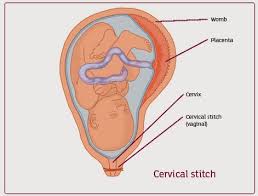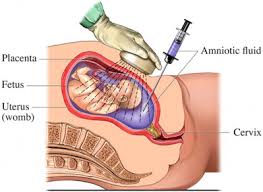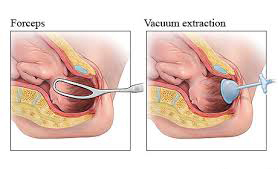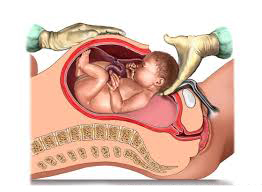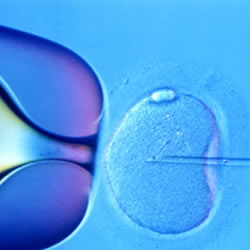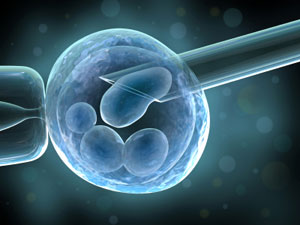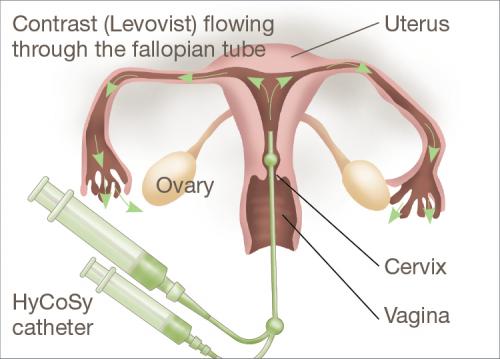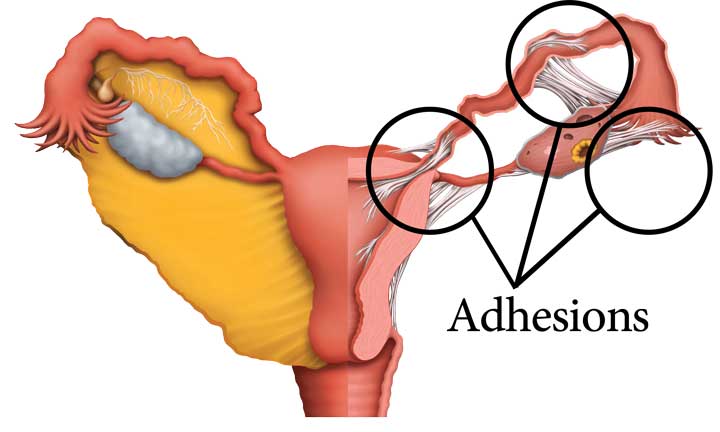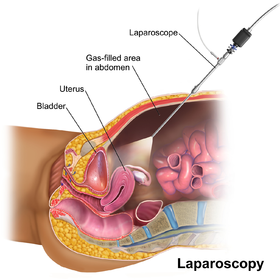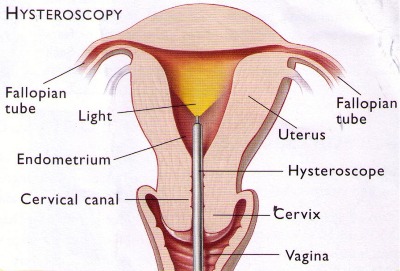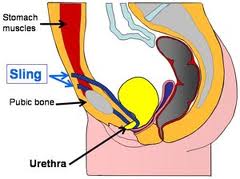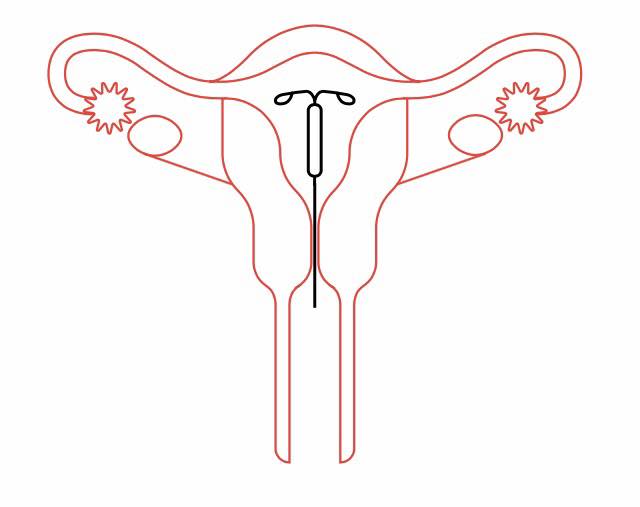Obstetrics
is a procedure in which amniotic fluid is removed from the uterus during pregnancy for chromosomal, genetic or perinatal infections testing. Amniotic fluid is the fluid that surrounds and protects the baby during pregnancy and contains fetal cells and various chemicals produced by the baby that provide material for such testing that yields valuable information about your baby's health, but it's important to understand the risks of amniocentesis — and be prepared for the results.
refers to a delivery in which the Obstetrician uses forceps or a vacuum device to extract the fetus from the vagina, with or without the assistance of maternal pushing. The decision to use an instrument to deliver the fetus balances the maternal, fetal, and neonatal impact of the procedure against the alternative options of cesarean birth or expectant management.
also known as C-section, is defined as the use of surgery to deliver one or more babies and is often performed when a vaginal delivery would put the baby or mother at risk. This may include obstructed labour, twin pregnancy, hypertension, preeclampsia, breech presentation, placental abruption or previa, umbilical cord prolapse, and previous C-section. A C-section typically takes 45 minutes to an hour and usually done with a spinal block except in emergencies where it may be done under general anesthesia.
the procedure is an elective surgery performed on babies for religious and cultural reasons and consists of the removal of the foreskin from the penile organ. In the most common procedure, the foreskin is opened, adhesions are removed, and the foreskin is separated from the glans. After that, the circumcision device is placed, and then the foreskin is cut off and hemostasis secured thereafter.
Fertility
is a type of artificial insemination for treating subfertility.During IUI Sperm that have been washed and concentrated are placed directly in the uterus around the time of ovulation.The hoped-for outcome of intrauterine insemination is for the sperm to swim into the fallopian tube and fertilize the egg, resulting in a normal pregnancy. Depending on the reasons for subfertility, IUI can be coordinated with your normal cycle or with fertility medications.
is a complex process used to treat subfertility or genetic problems and assist with the conception of a child. During IVF, mature eggs are collected via a trans-vaginal oocyte retrieval procedure from your ovaries and introduced in a petri dish to be fertilized spontaneously by the sperm of your partner in a lab. The resulting fresh embryos are transfered back to you uterus 3 or 5 days later via a catheter especially designed for the purpose of such embro transfer. If too many embryos are obtained, the excess embryos can be stored (frozen) and transferred at a later date of your choice. Your chances of having a suucessfull pregnancy using IVF depend on many factors, such as your age and the cause of infertility. In addition, If more than one embryo is implanted in your uterus, IVF may result in a pregnancy with more than one fetus (multiple pregnancy). Your doctor can help you understand how IVF works, the potential risks and whether this method of treating subfertility is right for you.
is the most effective form of assisted reproductive technology. It differs from conventional in vitro fertilization (IVF) in that the embryologist selects a single sperm to be injected directly into an egg, instead of fertilization taking place in a petri dish where many sperm are placed near an egg. This technique is utilized when the sperm count is low, or has decreased motility and in cases of obstructive azospermia where testicular sperm extraction has to be performed and also in cases where fertilization with frozen sperm has to be done.However the process of trans-vaginal oocyte retrieval followed by embryo transfer and the resulting success of pregnancy (depending on embryos quality and number) is the same as IVF.
refers to genetic profiling of embryos prior to implantation and is done in conjunction with an IVF or ICSI cycle. PGD is considered in a similar fashion to prenatal diagnosis. When used to screen for a specific genetic disease, its main advantage is that it avoids selective pregnancy termination as the method makes it highly likely that the baby will be free of the disease under consideration. PGD thus is an adjunct to assisted reproductive technology, and requires IVF or ICSI to obtain embryos for evaluation. PGD allows studying the DNA of embryos to select those that don't carry certain damaging characteristics and are eligible for embryo transfer and it is especially useful when there are previous chromosomal or genetic disorders in the family.
this test is usually done in combination with a ultrasound (Hycosy), x-ray (Hysterosalpingogram (HSG)) or diagnostic laparoscopy (Lap &dye). It involves injecting colored liquid through the fallopian tubes and watching the ends of the tubes for the dye. Spillage of dye indicates patent (open) tubes.
is a procedure consisting of severing of adhesive band(s) surrounding the fallopian tubes, usually done by laparoscopy. Peritubal adhesions can result from history of appendicitis/ruptured appendix, pelvic inflammatory disease or previous surgery and can be filmy or thick depending on progression of disease.the purpose of adhesiolysis is to increase the chances of fertility and achieving a normal pregnancy.
is the treatment of choice for superficial endometriosis (a disease in which tissue that normally grows inside the uterus (endometrium) grows outside it) encountered during laparoscopy. This is accomplished with the application of intense heat. Heat can be generated by a number of sources – electricity (cautery), ultrasound (Harmonic scalpel) or laser. Although each of the energy sources has its own specifications, none has been shown to be better than the other for destroying endometriosis lesions.
Gynecology
is the surgical removal of the uterus if indicated by a gynecologic diagnosis such as adenomyosis, fibroids,severe bleeding/anemia or oncologic diagnosis such as cancer of endometrium, ovaries or cervix. In a total hysterectomy, the uterus and cervix are removed. In somecases, the fallopian tubes and ovaries are removed along with the uterus (called hysterectomy with bilateral salpingo-oophorectomy). In a subtotal hysterectomy, only the uterus is removed. In a radical hysterectomy for oncological cases, the uterus, cervix,ovaries, oviducts, lymph nodes, and lymph channels are removed. The type of hysterectomy performed depends on the reason for the procedure and approach can be abdominal (TAH), vaginal (TVH), Laparocopic (TLH) or laparoscopy assisted (LAVH) . In all cases, menstruation stops and a woman loses the ability to bear children.
is the removal of fibroids (benign noncancerous tumors) from the outer(serosal), Middle(muscular), or inner(mucosal) wall of the uterus. Myomectomy is the preferred treatment for symptomatic fibroids(ex: pain, heavy bleeding, large size) in women who want to keep their uterus. Larger fibroids are ususally removed with an abdominal incision, but small fibroids can be taken out using laparoscopy or hysteroscopy.
is the surgical removal of one or both ovaries via open or laparoscopic technique and is usually done along with salphgniectomy (resection of fallopian tubes) . Nowadays, it is most commonly performed as a standalone preventive measure for woman with history of breast or ovarian cancer but can be also performed for many benign conditions.
refers to the removal of an ovarian cyst(ex: simple, solid or endometriomal cysts) while preserving the ovary. It is usually done via laparoscopic approach and open surgery is only reserved for large sized cysts only.Every effort is made to preserve the ovary for patients who desire fertility and care is taken to avoid any spillage of contents, always taking into consideration the possibility of malignancy
is a type of surgical procedure in which a small incision is made, usually through the umbilicus, through which a viewing tube (laparoscope) is inserted. The viewing tube has a small camera on the eyepiece that allows the doctor to examine the pelvic organs on a video monitor connected to the tube. Other small incisions can be made to insert instruments to perform various Gynecological procedures. Laparoscopy can be done to diagnose medical conditions (diagnostic) or to perform certain types of operations (Operative). It is less invasive than regular open abdominal surgery (laparotomy).
is a procedure that allows a physician to look through the vagina and neck of the uterus (cervix) to inspect the cavity of the uterus. A telescope-like instrument called a hysteroscope is used. Hysteroscopy is used as both a diagnostic tool to evaluate the cause of infertility, to determine the cause of repeated miscarriages,and an operative tool to excise septums, polyps and fibroids.
also referred to as cystourethroscopy, is a diagnostic procedure used to look at the bladder (lower urinary tract), and examine bladder lesions and is performed with an optic instrument known as a cystoscope(urethroscope). This surgical procedure also enables biopsies to be taken to diagnose urinary tract disease.
also known as TVT (tension-free vaginal tape) and TOT (tran-obturator tape) are becoming increasingly popular for the treatment of all types of female stress urinary incontinence (SUI). The procedure involves placing a band of sling material directly under the bladder neck (ie, proximal urethra) or mid-urethra, which acts as a physical support to prevent bladder neck and urethral descent during physical activity. The sling also may augment the resting urethral closure pressure with increases in intra-abdominal pressure.
When the tissues that support the pelvic organs become weak, stretched or damaged, due to age or childbirth, the pelvic organs (bladder, rectum) can prolapse and create a bulge in the vagina, causing pressure, pain, discomfort, and urinary and bowel dysfunction, among other symptoms. Anterior and posterior repair procedures are used to tighten the support tissues that hold these organs in place, restoring their normal position and function.
IUD is insertion is a simple procedure whereby the doctor will insert a speculum in your vagina and then use a special inserter to put the IUD through the opening of your cervix and into your uterus. The process usually takes less than five minutes following which u will be prescribed antibiotics and an ultrasound will be done to confirm the IUD is inside uterus.
Copyright 2016 by eyemails.com
 ##
##


